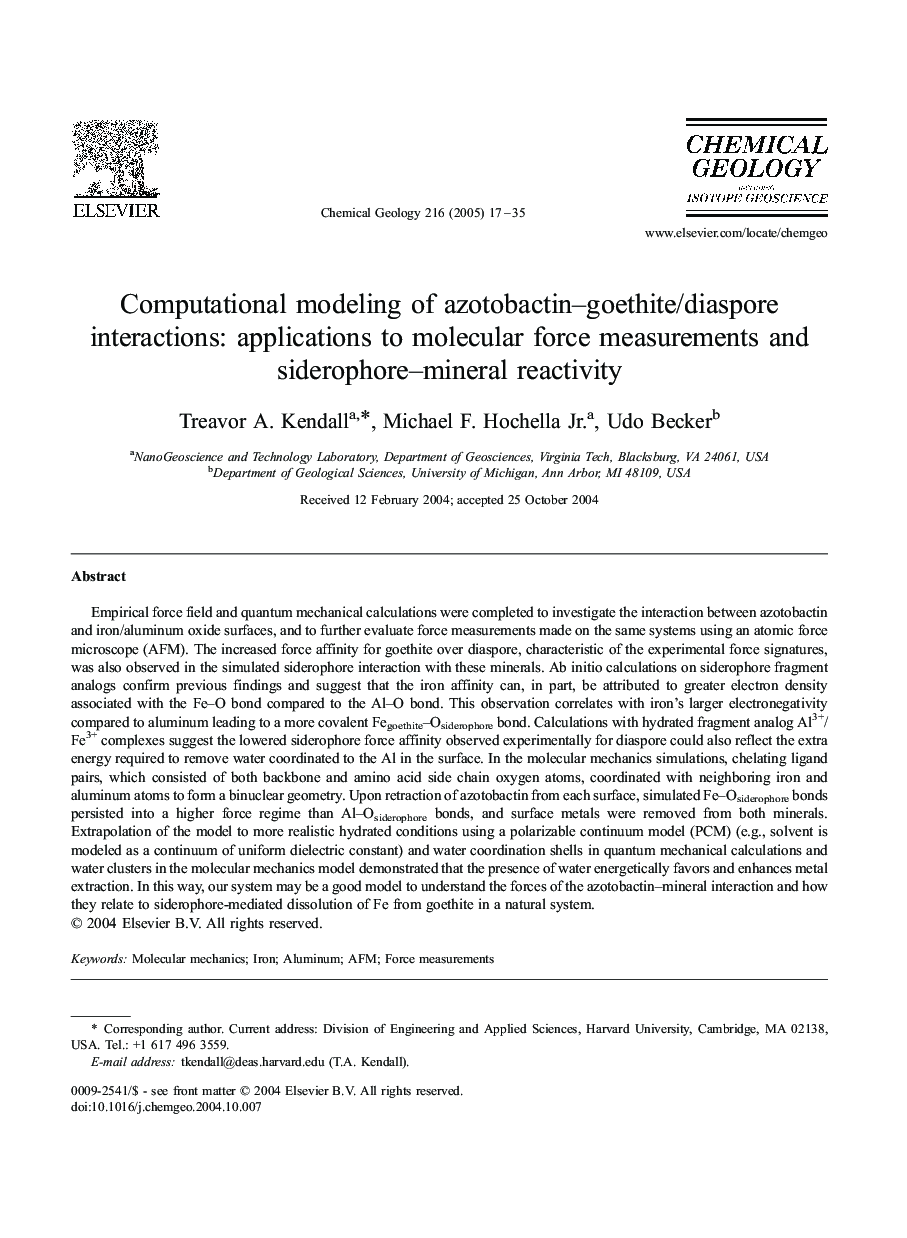| Article ID | Journal | Published Year | Pages | File Type |
|---|---|---|---|---|
| 9529122 | Chemical Geology | 2005 | 19 Pages |
Abstract
Empirical force field and quantum mechanical calculations were completed to investigate the interaction between azotobactin and iron/aluminum oxide surfaces, and to further evaluate force measurements made on the same systems using an atomic force microscope (AFM). The increased force affinity for goethite over diaspore, characteristic of the experimental force signatures, was also observed in the simulated siderophore interaction with these minerals. Ab initio calculations on siderophore fragment analogs confirm previous findings and suggest that the iron affinity can, in part, be attributed to greater electron density associated with the Fe-O bond compared to the Al-O bond. This observation correlates with iron's larger electronegativity compared to aluminum leading to a more covalent Fegoethite-Osiderophore bond. Calculations with hydrated fragment analog Al3+/Fe3+ complexes suggest the lowered siderophore force affinity observed experimentally for diaspore could also reflect the extra energy required to remove water coordinated to the Al in the surface. In the molecular mechanics simulations, chelating ligand pairs, which consisted of both backbone and amino acid side chain oxygen atoms, coordinated with neighboring iron and aluminum atoms to form a binuclear geometry. Upon retraction of azotobactin from each surface, simulated Fe-Osiderophore bonds persisted into a higher force regime than Al-Osiderophore bonds, and surface metals were removed from both minerals. Extrapolation of the model to more realistic hydrated conditions using a polarizable continuum model (PCM) (e.g., solvent is modeled as a continuum of uniform dielectric constant) and water coordination shells in quantum mechanical calculations and water clusters in the molecular mechanics model demonstrated that the presence of water energetically favors and enhances metal extraction. In this way, our system may be a good model to understand the forces of the azotobactin-mineral interaction and how they relate to siderophore-mediated dissolution of Fe from goethite in a natural system.
Related Topics
Physical Sciences and Engineering
Earth and Planetary Sciences
Geochemistry and Petrology
Authors
Treavor A. Kendall, Michael F. Jr., Udo Becker,
